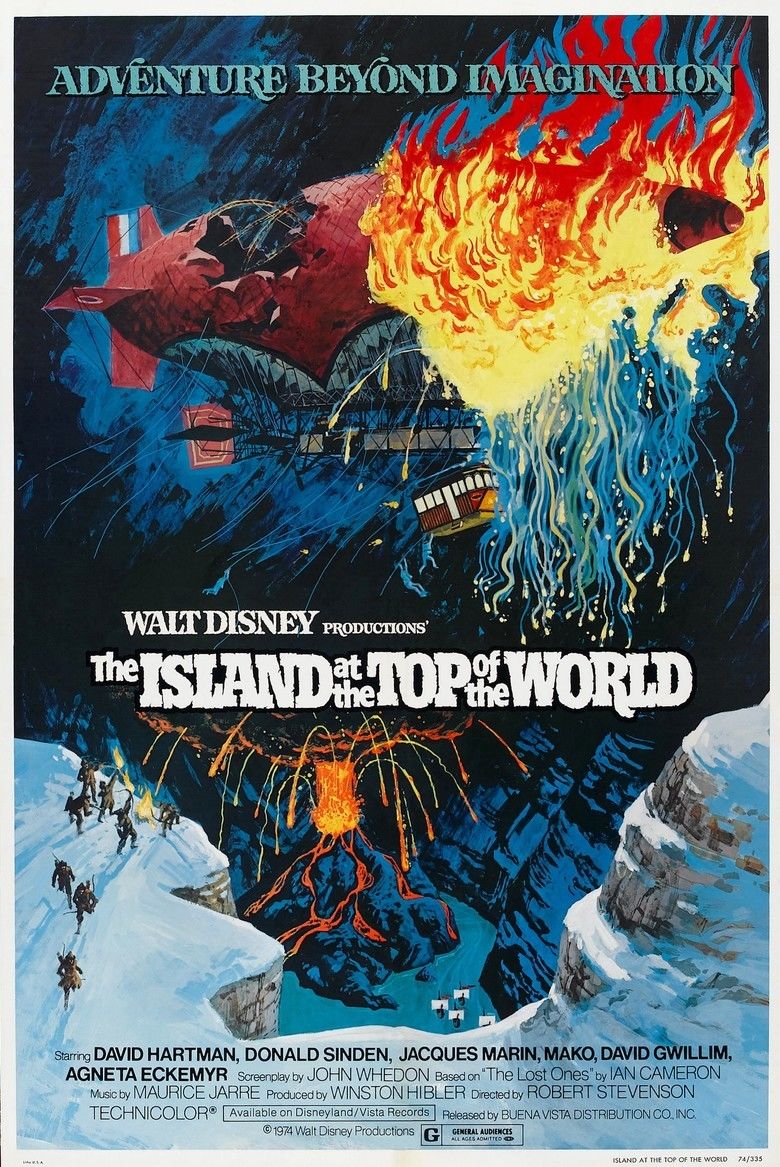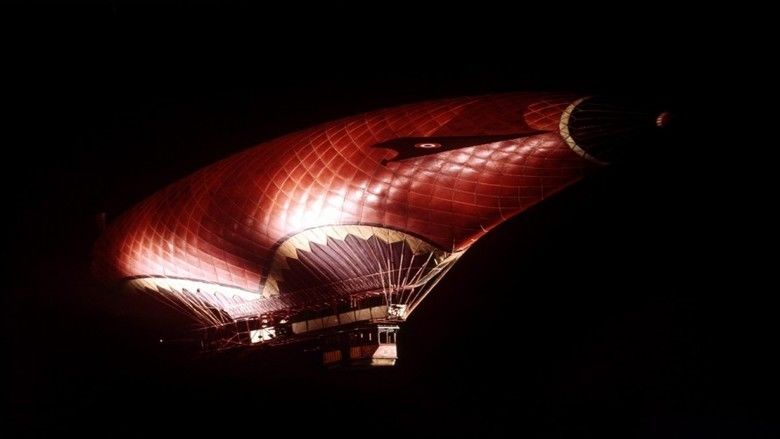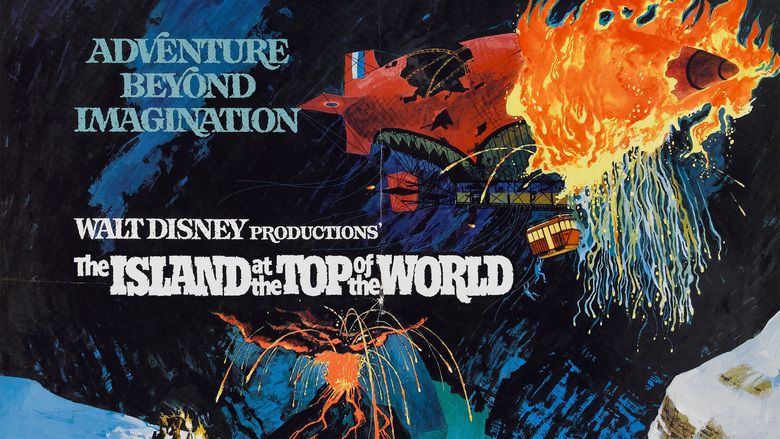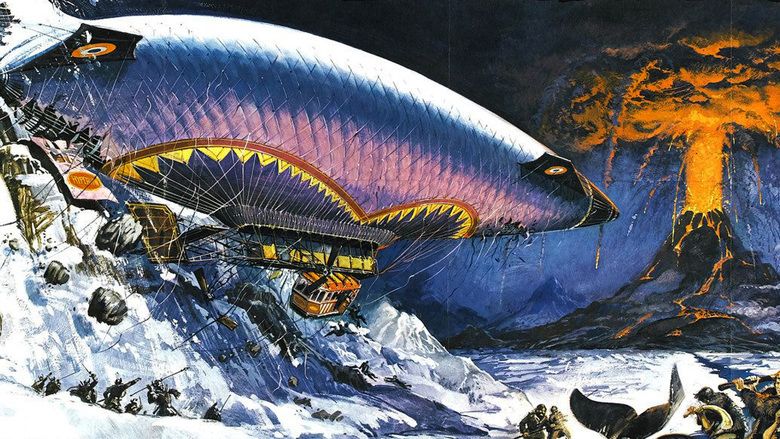The Island at the Top of the World
5.2 /10 1 Votes
43% Rotten Tomatoes Genre Adventure, Family, Fantasy | 6.3/10 IMDb Director Robert Stevenson Duration | |||||||||||||||||||||||||||||||||
 | ||||||||||||||||||||||||||||||||||
Language EnglishSwedishNorwegianDanishIcelandic Writer Ian Cameron , John Whedon Release date December 20, 1974 Cast (Sir Anthony Ross), (Prof. Ivarsson), (Captain Brieux), Mako (Oomiak), (Donald Ross), (Freyja)Similar movies Related Robert Stevenson movies Tagline Adventure beyond imagination | ||||||||||||||||||||||||||||||||||
The island at the top of the world trailer
The Island at the Top of the World is a 1974 Disney film starring Donald Sinden and David Hartman.
Contents
- The island at the top of the world trailer
- The island at the top of the world 1974 follow it
- Plot
- Cast
- Production
- Writing
- Release
- Reception
- Soundtrack
- Recording
- Other
- References

The island at the top of the world 1974 follow it
Plot

In London in the year 1907, a British aristocrat named Sir Anthony Ross (Donald Sinden) hastily arranges an expedition to the Arctic to search for his lost son Donald. Donald had become lost on a whaling expedition to find the fabled island where whales go to die.

Sir Anthony employs the talents of a Scandinavian-American archaeologist Professor John Ivarsson (David Hartman) and Captain Brieux (Jacques Marin), a French inventor/aeronaut who pilots the expedition in a French dirigible named the Hyperion, which Captain Brieux invented. Upon reaching the Arctic, they meet Oomiak (Mako Iwamatsu), a comically cowardly/brave Eskimo friend of Donald's, and trick him into helping them join in the search.

Ultimately, the expedition becomes (temporarily) separated from Captain Brieux, and discovers an uncharted island named Astragard, occupied by a lost civilization of Vikings, cut off from the rest of the world for centuries. The Vikings capture Sir Anthony and Ivarsson, but Oomiak escapes. Shortly thereafter they find Donald, but are nearly put to death by the fanatic Godi (pronounced "Go-dah"), a sort-of Lawspeaker/Soothsayer authority figure.
The three men (Sir Anthony, Ivarsson and Donald) are saved from being burned alive by a brave and beautiful Viking girl named Freyja, with whom Donald is deeply and mutually in love. They escape, and are rejoined by Oomiak and eventually find the Whales Graveyard, but are attacked by Killer Whales. Here they are saved by the sudden reappearance of Captain Brieux, but they are still being pursued by the angry Godi and his rather unwilling warriors.
Finally, Godi is killed by the explosion when he shoots a fiery arrow at the Hyperion, but the Vikings will not let the expedition return to their world unless one of them remains behind as a hostage. Ivarsson however, willingly volunteers to stay, because this is a chance to live history. Ivarsson also points out that if someday Mankind is ever foolish enough to destroy itself, places like Astragard may become humanity's final refuge.
Sir Anthony, Donald, Freyja, Captain Brieux and Oomiak, are allowed to depart in peace, promising not to tell the Outside World about Astragard. As Ivarsson heads back to Astragard, he turns to look back just in time to see his four friends move further and further away until they vanish into the Arctic mist.
Cast
Production
The film's pre-production lasted for several years. The 30th Anniversary Edition of the film, released by Walt Disney Studios Home Entertainment in 2004, includes a "1968 Pre-Production Trailer" as a bonus feature, which includes an interview with producer Winston Hibler.
Writing
The film was based on the novel The Lost Ones, written by Ian Cameron, set in the location of Prince Patrick Island. To tie in with the film, the novel was reissued with the movie's title. There were several changes from the book to the film. The novel is set in 1960, but the film is set in 1907. Instead of Prince Patrick Island, the island in the film is located due north of Ellesmere Island (cf. Crocker Land). Several extra characters and the airship Hyperion appear in the film, but not in the novel. Also, the greatest departure in the film is Freyja survives to (presumably) live happily ever after with Donald, whereas in the book she tragically dies, sacrificing herself to save Donald and Sir Anthony.
Release
The film, which was produced by Walt Disney Pictures, was released together with Winnie the Pooh and Tigger Too in a family-oriented roadshow package.
The film received an Academy Award nomination for its Art direction/set decoration (Peter Ellenshaw, John B. Mansbridge, Walter H. Tyler, Al Roelofs, Hal Gausman).
A sequel was planned, entitled The Lost Ones, based more closely on the original novel, but was abandoned when it became apparent that Island at the Top of the World would not be a box office success.
Reception
Despite the lukewarm reception upon its first release, it has been given better reviews in later years. The movie hold a 43% rotten rating on Rotten Tomatoes, based on just 7 reviews.
Soundtrack
The film's score was created by film composer Maurice Jarre. This was Jarre's first score for a Disney film. The score featured sweeping themes that were tinged with ethnic string and percussion instruments that helped to portray the various cultures represented in the film.
Recording
In order to have better balance control over the individual instruments and orchestral sections, the score was recorded on multiple reels of simultaneously-recorded 35mm magnetic film. Since multiple reels of 3-track magnetic film were synchronized over several recording sessions in order to have all the tracks in the recording, it was possible to have several different versions of the score from which to choose. In addition, many of the exotic percussion and other instrumentation were overdubbed later, after the initial orchestral sessions were completed. The score was then mixed down to mono along with the final dialog, sound effects and score for insertion into the film.
In 1974, to accompany the film release, Disney released a story record album containing audio clips from the film, an eleven-page illustrated booklet. The story was narrated by baritone voice actor Thurl Ravenscroft, Jarre's score for the film was re-recorded on solo organ for the storybook record release and does not contain the orchestral recording of the score that was used in the film. (1974: Disneyland Records - Catalog No. 3814, Mono, LP format)
During the 1970s, portions of the orchestral score to Island at the Top of the World were used in Disneyland's Adventureland. Jarre's music was mixed with various other music cues from other Disney films and attractions to create a continuous loop of ambient adventure music. The music collage was played in ride cues, restaurants and shopping areas inside the park.
In 1994, the laser video disc release of the film, included the monaural score isolated on a separate audio track.
In 2010, The main title music from the film was presented on a 4-CD compilation of Maurice Jarre film music entitled "Le Cinema De Maurice Jarre", released in France. The track was in mono and presumably sourced from the original session mixdown.
In March, 2012, Intrada record label, released the complete score to the film on compact disc (Intrada Special Collection, Volume 193). For the release, engineers were given access to the Disney vaults containing the complete original recording elements, which were recorded onto multiple reels of 35mm magnetic film. Intrada synchronized the recording elements and remixed the entire film score, resulting in a restored version heard in stereo for the very first time.
Other
Hyperion is a brand used by Disney for publishing endeavors, from the early 1990s. Disney had a studio on Hyperion Avenue in Los Angeles early in their history.
References
The Island at the Top of the World WikipediaThe Island at the Top of the World IMDbThe Island at the Top of the World Rotten TomatoesThe Island at the Top of the World themoviedb.org
